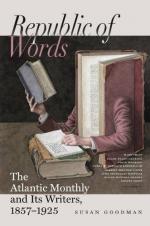“In the same connection he characterizes nitrogen as a substance ’not condensible under fifty atmospheres,’ leaving the reader to infer that the preceding ingredient on the list, oxygen, is condensible (liquefiable) within that limit of pressure, and that nitrogen becomes liquid at or above it; whereas neither oxygen nor nitrogen has ever yet been compressed into a liquid, although a force of more than fifty times fifty atmospheres has been brought to act upon them.”
[We consider an experiment requiring twenty-five hundred atmospheres, when the thermometer marks 93 deg. in the shade, indictable at common law. To desire more than one, under such circumstances, is unreasonable, and even wicked.]
“4. In referring to the Thermo-barometer as a means of measuring heights, the writer confounds the late Professor Edward Forbes with Professor James D. Forbes, recently of Edinburgh, but now Provost of the University of St. Andrews. The former was a great Zooelogist and Botanist, and did not occupy himself with investigations in Physics; the latter is an eminent Physicist, the author of the viscous theory of Glaciers; and it is he who made the observations here ascribed to the ’Professor Forbes, whose untimely death the friends of science have had so much reason to deplore.’ The author adds the further mistake of supposing that the numerical constant, 549 feet for each degree, determined by James Forbes for Scotland, is equally correct for all latitudes.”
[This hardly needed confutation. No university requires any numerical constant of height as qualification for a degree; and if they did, 549 feet would be excessive, unless, perhaps, at Warsaw, where everybody is tall enough to end in ski.]
“5. Our essayist discloses but an imperfect inkling of knowledge on the subject of capillarity in barometers, when he speaks of this complex action as equivalent to the attraction between the mercury and the glass tube; and he commits a yet graver mistake, practically speaking, in reiterating the long exploded error, that ’the weight of the atmosphere at the level of the sea is the same all over the world.’ No fact in Meteorology is better established than that the mean pressure at the sea-level is different for different latitudes. In the vicinity of Cape Horn the barometer is three-fourths of an inch lower than at the Equator, and according to Schouw the pressure increases from the Equator up to a certain latitude (38 deg.) in both hemispheres, and diminishes thence towards the Poles.”
[The connection between capillarity and the fat of the common bear is well known to all manufacturers of trycoverus compounds, and they are probably right in advertising that grease of this description restores tone to the hair,—of course a fine beary tone. As the weight of the bear depends on his fat, the inference to a bear-ometer is obvious. It is a familiar fact that the bear supports life




